Christopher Miller, MBA | Specialized Wealth Management
Originally Appeared in Apartment Management Magazine
Recently, I helped a handful of my clients explore Qualified Opportunity Zones a a vehicle to defer their capital gains taxes. My usual business consists of working with investors who have sold real estate, but these investors had sold stock, personal residences and businesses. 1031 Exchanges, of course, aren’t available to sellers of such assets, so we looked to Opportunity Zones as a way to help with potential tax problems.
The largest Opportunity Zone sponsors in the country don’t plan to offer these investments any longer after their current offerings sell out in early 2024.
This is because they do not expect Congress to extend the legislation that made them possible in the first place. As this may be the “last call” for Opportunity Zones, I wanted to write about them this month.
What Opportunity Zones Are
Opportunity Zones were created to offer tax incentives that would encourage investment in certain areas of the country. Based on that description, one would expect eligible properties to be unattractive; flooded areas of New Orleans, the former Packard factory in Detroit that has been vacant for 60 years or similarly unattractive areas. It turns out that this is far from the truth.
Opportunity Zones were created by elected officials, so every politician in the country had their hand out to create zones in “their” neighborhoods. The state of California alone has 879 Opportunity Zones and include areas in Beverly Hills and along Fraternity Row at the University of Southern California.
So if I invest in an Opportunity Zone, I’m not stuck investing somewhere that I need to wait 10 years for growth? I can invest somewhere with the potential to grow now? There are Opportunity Zone funds that contain completed and cash-flowing properties with the potential to earn income from day one? I was interested. What are the tax benefits?
The Tax Benefits – The Advantages
If I experience a capital gain from selling stocks, selling real estate without a 1031 Exchange, or any other sort of eligible asset, I can delay paying taxes on that gain if I invest just the gain in a Qualified Opportunity Zone. I will get a 10% discount (in the form of a 10% basis increase) in 2026 and then will owe taxes on the gains I have deferred with the return I file in April (or October) of 2027. After 10 years, I can sell the Opportunity Zone property and pay zero capital gains on it.
How Do We Pay The Taxes In 2027?
With an Opportunity Zone, the taxes are still due 4 years from now but you can’t sell the asset for 10 years. The Opportunity Zone investment managers that I work with have found a solution for this problem – they will use investor funds to develop properties and, when the properties are completed and cash flowing, will then perform a cash-out refi to return money to investors – which they can then use to pay deferred Capital Gains taxes.
What Additional Tax Benefits Are There?
After 10 years, the Opportunity Zone properties can be sold – and of course the goal is to sell at a profit. At that time, there will be no Federal Capital Gains tax on any profit realized from the Opp. Zone sale.
As with all investment real estate, income paid by the Opp. Zone can be sheltered by depreciation. Upon sale of the Opp. Zone, investors will not need to pay taxes on their Accumulated Depreciation. In the case of the Opportunity Zone, it’s a “free” benefit!
Are There Timelines To Follow – Like In A 1031 Exchange?
Yes. When you sell your stock, cryptocurrency, collector car, artwork or any other asset for a capital gain, you have 180 days from the sale closing date to invest in a Qualified Opportunity Zone. If a business entity owned the asset, or if you sold a corporation as part of a business sale, you may have longer. If, for example, you sold an S Corporation in 2022, you will have 180 days from when taxes are due in which to make your Qualified Opp. Zone purchase to defer taxes. Since corporate taxes are due March 15, you’ll have 180 days from that date to make a qualifying investment. There are a few variables that apply to this corporate rule – if you have questions, call my office and we can help you sort it out.
A Case Study
Please note that this is a hypothetical illustration of mathematical principles only and not a promise of performance. No investment can guarantee that it will achieve its objectives.
Let’s say that a client inherited their grandparents’ beach house in Corona Del Mar, California back in 1999. Upon the last grandparents’ death, their heirs received a stepped-up basis so they could sell the house that day and pay no taxes. Back in 1999, this house was reported to be worth $750,000. The clients in this case were using the house as their primary residence until earlier this year when they sold for $5.2 million. As a married couple, they are entitled to a combined $500,000 exemption from capital gains from their primary residence. Unfortunately, that will only cover a small portion of their ($5,200,000 – $750,000 = $4,450,000) capital gain.
Remember that such a large capital gain falls into the 20% bracket for the IRS, and that any gain above $1,354,551 will be taxed at California’s 12.3% rate. It would also be subject to the 3.8% “Obamacare” tax on investments.
When we remove the $500,000 exemption, the taxable capital gain becomes ($4,450,000 – $500,000 = $3,950,000.) When using an Opportunity Zone, the investor can take their basis plus any exemptions tax-free. This couple can then put ($750,000 + $500,000 = $1,250,000) into their bank account, pay no tax on it, and use it for whatever they’d like.
Unfortunately, the California Franchise Tax Board does not allow the deferral of taxes due to Opportunity Zone investments. The Federal 20% and 3.8% “Obamacare” tax, however, can be deferred. Let’s estimate his California Capital Gains tax due at 11%. That is ($3,950,000 X 11% = $434,500) Fortunately, the Opportunity Zone will allow us to defer your 20% Federal Tax plus your 3.8% “Obamacare.” That’s ($3,950,000 X 23.8% = $940,000): almost $1 million saved!
The tax paid is deducted from your Capital Gain, so your remaining amount to be deferred is $3,515,000. As discussed above, an investment of this amount in an Opportunity Zone will defer your tax due to 2027, when a cash-out refinance is planned that will pay your tax bill. The managers’ goal is to sell after 10 years and return a profit to you. Again, this amount will not be subject to Federal Capital Gains or Accumulated Depreciation taxes.
Opportunity Zone Summary
A Qualified Opportunity Zone investment can be considered to achieve similar goals as a 1031 Exchange, and is best used when a 1031 Exchange is not possible. An Opportunity Zone, just like a 1031 Exchange, seeks to defer taxes to keep more of your hard-earned principal creating income and growth potential for you. Could a Qualified Opportunity Zone investment benefit your situation? My office number is (877) 313-1868.

